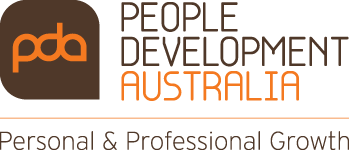Thank goodness it’s Monday
I was recently conducting a workshop with a group of executives, focussing on strategies to develop a positive culture. I asked the question; how would you measure a highly engaged team? One of the executives said, “I’d love our team to come to work at the start of the week and say, “Thank goodness it’s Monday!”
As human resource professionals, we know that an engaged workforce provides many intangible benefits, and can be linked to productivity, retention, customer service and loyalty. In the past five years quantitative research studies have provided us with a compelling business cases regarding the upsides of an engaged workforce and the downsides of a disengaged workforce.
But what are some key drivers for an engaged employee and how do we implement sound engagement strategies? How do we get our teams to love being back at work at the start of the working week?
This article will explore 5 tips for developing and implementing your Employee Engagement Strategy.
According to global employee survey company BlessingWhite, full engagement represents an alignment of maximum job satisfaction (“I like my work and do it well”) with maximum job contribution (“I help achieve the goals of my organisation”). Engagement is not only about your team feeling good about their job; it’s also about the desire to do their very best in their role. Highly engaged employees are enthusiastic and excited about their organisation and its goals, and contribute wholeheartedly to their team’s success.
However when I conduct Employee Engagement programs or attend Employee Engagement seminars and conferences, people seem to be searching for a silver bullet. They are looking for a ‘secret recipe’ or quick solution for that elusive engagement strategy. What people tend to miss is the importance of all the separate ingredients – great culture, sound leadership, mature reward and recognition, growing interpersonal relationships and open communication – and the intrinsic nature of these parts in a successful engagement strategy.
So how do you improve employee engagement? Like improving culture, the answer is one step at a time (see our article Don’t blame your culture). Here are 5 tips to get that “I’m glad it’s Monday” excitement in your workplace.
- Empower individuals to take control of their own engagement and behaviour
Each of your employees comes to work with unique motivators, interests and talents. They cannot expect the organisation to provide an exact set of tasks and conditions to fit their personal definition of meaningful or satisfying work.
In our last newsletter Should I stay or should I grow? we discussed how individuals need to be proactive in communicating their individual expectations; they need to communicate how they see their best ‘fit’ within the organisation. Employees should also be proactive in building their skills sets, articulating their interests and identifying their goals.
Your team environment should foster opportunities for candid conversations with your employees about individual expectations, shaping of roles, clarification of work priorities and articulation of their goals and needs. Exploring how an employee’s individual talents are used is important. Don’t leave this for the annual performance review, but instead develop a culture which allows such conversations at any time.
- Engage employees early and often.
Ensure employees have a voice in the area of engagement. If you are conducting a employee engagement survey, have your employees participate in deciding the questions to be asked, investigation of the results and give them an opportunity to generate strategies and interventions. Metaphorically, you won’t get everyone on the same page unless everyone has been able to contribute to that page.
- Under-measure and over-deliver.
The increasing use of employee engagement surveys is an encouraging trend in the development of workplace culture. Data can be very helpful in identifying areas needing improvement and strategies for success.
Often when the latest engagement survey results are shown to an executive team, everyone immediately goes to the details of the underperforming areas and totally miss the areas of great success.
Don’t just focus on the areas that need fixing. Instead look for areas of success within your organisation, celebrate them and see how you can repeat these successes over the whole organisation. Celebrate success more than you focus on failure, do it as soon as possible after the event and do it often.
Finally, survey less and act more. Data can help you produce some great strategies for improvement, but remember; making strategy work is more difficult than the task of strategy-making! The actual execution of your strategy is critical to engagement success. Gaining feedback from your employees is important, however acting on feedback in a timely manner is more important.
- Bad management is really expensive
Employee relationships with their managers is a key driver of employee engagement. The more employees feel they know their managers as people, the more engaged they’re likely to be (BlessingWhite: 2011). Managers drive engagement through who they are and what they do. Good management teams build relationships and they have the ability to drop the veil of their position or title, becoming better understood by employees. That doesn’t necessarily mean being best friends, but it does mean sharing personal motivation for work, challenges and appropriate weaknesses. Developing trust as part of this process is crucial. Humanise the workplace by creating opportunities to reward, develop and grow people and relationships.
Leaders also need to take control of their own engagement and pay attention to the engagement of their direct reports. Disengaged managers cannot help others become more engaged in the same way a flat car battery cannot jump-start another car.
- Employee engagement is not a soft skill.
Employee engagement is not mushy and fluffy, but rather vital and pivotal. It is intrinsic to the organisation and is part of the cultural fabric. Changing this fabric requires ‘hard’ skills such as strategy development, strong leadership, communication systems and processes, and tangible rewards and recognition frameworks. Often this is borne from the empirical data of organisational surveys, but also from mature review and feedback processes. Changing the cultural fabric requires managers to ‘walk the talk’ and to develop and grow trust though well executed business strategies implemented in an open and consultative manner.
Seeing engagement as separate from the traditional financial or marketing strategy and technical aspects of the organisation undervalues the extent of this area and can dilute organisational success as a whole. The ‘soft’ variables that HR tends to deal with have hard outcomes – quantifiable, measurable outcomes that are pivotal to productivity, customer satisfaction and bottom line results.
What are your tips for creating great employee engagement? – Tell us your tips on the People Development Australia LinkedIn Discussion Page.
Email us for copies for the BlessingWhite and ORC International Employee Engagement Reports and People Development Australia’s engagement summary.
Top drivers of Employee Engagement based on several national and international surveys:
- Opportunities to apply individual talents
- Career development
- Training and development
- Recognition and rewards
- Internal communication
- Flexibility and work life balance
- Positive culture and company reputation

